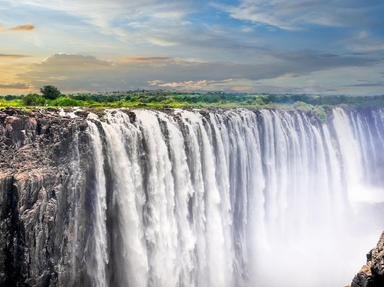Quiz Answer Key and Fun Facts
1. So inextricably linked to Zambia's culture and economy is it, it would be difficult to write a quiz on Zambia without including a question on Victoria Falls. The falls themselves are on a border with another country. Which one?
2. Zambia is situated in the interior of southern Africa so it was "discovered" relatively late by Europeans. Whilst the area was first visited by the Portuguese, the country is most associated with one explorer and missionary. I presume you will know who?
3. In 1953, the roots of the Zambian country were laid down when Northern Rhodesia combined with Southern Rhodesia (Zimbabwe) and which third country to form a single semi-autonomous region?
4. There are seven major river systems in Africa. The geography of Zambia is governed by the watershed of two of these rivers. Which two?
5. Zambia is a country with eight neighbours. The westernmost point of the country can not be pinpointed. Why not?
6. Zambia achieved independence in 1964 and a very elaborate National Assembly building was built in its capital. This is Livingstone I assume, not presume?
7. The Zambian flag is unusual in that the features are situated on the opposite side of the hoist. The colours represent traditional African beliefs but what does the eagle and its positioning represent?
8. Soccer is the most popular sport in Zambia. The national side is known as the "Copper Bullets". Why?
9. Speaking of soccer, a tragedy occurred to the national soccer team in Libreville, Gabon (pictured). True or False: In 1993 a plane crash occurred killing all 18 Zambian players.
10. The local Zambian cuisine is based on nshima, a stiff porridge made from what?
Source: Author
1nn1
This quiz was reviewed by FunTrivia editor
agony before going online.
Any errors found in FunTrivia content are routinely corrected through our feedback system.
